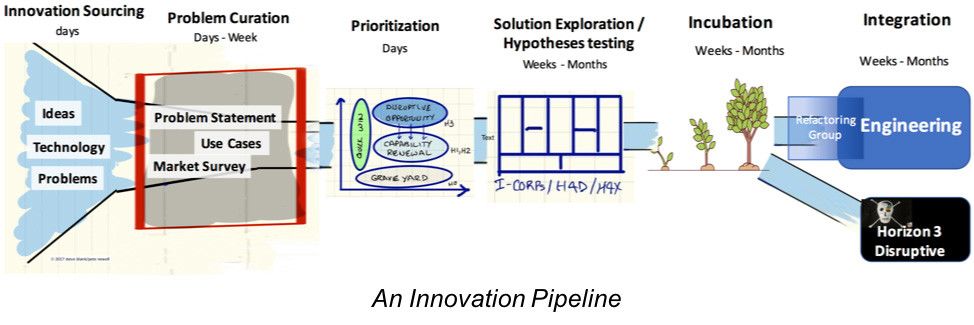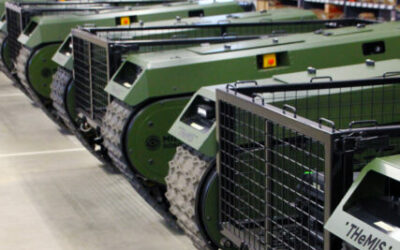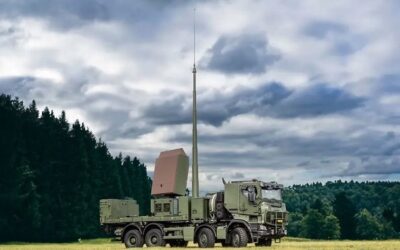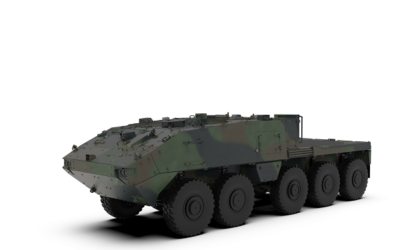The ONR launches H4X, a start-up like innovation process
On the week of 19 March, the US Office of Naval Research (ONR) launched a programme designed to spur innovation in the Navy and the Marine Corps with a kick-off session held at the Naval Postgraduate School in Monterey, California. The Naval Innovation Process Adoption (NIPA), as the initiative is called, responds to a call from top military leaders to accelerate delivery of technology to the war fighter.
“Today, the defence acquisition process focuses on addressing one big problem, choosing one entity to solve it and developing one technology as a result; that technology has to be a winner. Often, however, it is not,” Peter Newell, retired Army Colonel, former head of the Army’s Rapid Equipping Force and Managing Partner at BMNT told MONCh. The problem lies in the fact that, currently, the companies that serve the armed forces cannot produce innovations fast enough. These are often large companies that specialise in government contracting, but which often lack the time and room for manoeuvre to allow for an incubation period in order to refine ideas before sending them to execution, something that would greatly enhance efficiency over the longer term. At the other end of the spectrum, smaller companies that excel at innovation do not work on defence contracts, in no small part due to the large amounts of paperwork and time required to access government funds. As a result, there is an innovation gap in defence.
To tackle these issues in the naval domain, NIPA will be applying a method called H4X, a problem-solving method used by various organisations across the Department of Defence (DoD) as well as other government agencies. H4X uses the ‘Innovation Pipeline’: “The idea is to create a crowd of people as a sourcing mechanism and then create a series of activities that allows one to then condense them more tightly at every step and make key decisions about what things to take off and what things are going to be funded further,” Mr Newell continued. Dr Richard Carlin, Head of ONR’s Sea Warfare and Weapons Department, added: “Another added benefit of the Innovation Pipeline is that it allows those who use it to quantify how it is working for them. For instance one may start with 200 suggested problems, which are then narrowed down to 20 curated problems, further narrowed down to 10 potential solutions, then five prototypes and, eventually, two programmes.”
In other words, using the Innovation Pipeline within NIPA would allow the ONR to work with other organisations to break down the larger, originally identified problems into smaller, more targeted and prioritised ones, thus using the process of innovation in such a way that by the time money is invested in developing solutions, these have a much higher chance to arrive on time, on target and on budget.
But there is more to it than simply facilitating the innovation process. Dr Carlin indicated that “because H4X is geared towards reaching out to the private investment centre,” they are now exploring the opportunity to look at dual-use technologies. “If we can find solutions that work for both the commercial sector and the military, it is a cost-saving solution for the military.” The NIPA team is also considering the possibility of involving large defence contractors in the process by contributing funds, much like venture capitalists do in the Sillicon Valley. “The idea is to create a space where industry understand what the government needs but also how venture capitalists and the commercial world work; it is about putting the right people in the room in the right context to create a dual use investment that is of value to all three parties,” said Mr Newell.
NIPA is going to run for three years: the first year various organisations in the research and development community within the navy will adopt it through substantial direct support from BMNT; the second year the hope is that these organisations will start implementing it themselves, with BMNT providing advisory support; and, the third year these organisations will use the process without outside support but BMNT might assess them to see how well they are doing (this is still being discussed). The process will first be used on contracting: “The idea is to gather people together through some facilitator process to identify better ways of doing business, particularly with start-ups,” said Dr Carlin. Next, the process will be applied on innovation in relation to autonomy: “We will be getting many suggestions on where there are problems so it will be crucial to be able to narrow it down to things that can be done in the rapid prototyping process,” Dr Carlin continues. The team is also talking to the Naval Undersea Warfare Centre in Newport to use the process for undersea warfare prototyping.
A variant of H4X has also been developed for university students, H4D (Hacking for Defence), whereby universities create a pipeline of young technologists and entrepreneurs who are willing to take on some of the nation’s toughest challenges. Starting with Stanford University in the US, BMNT has already travelled to universities in Australia, where the government is looking at working more closely with universities in order to facilitate innovation, as well as the UK, and Mr Newell indicated that NATO in Norfolk was also interested in the concept.
“We found that basing H4X out of naval force postgraduate school means people then move on to their job postings already with this knowledge and skill, which they are then eager to apply to the challenges they face there,” concluded Dr Carlin. “It is a social process before anything else, teaching people how to talk to other people to get the right information in the right context,” added Mr Newell.
AV

(Photo: BMNT)
























